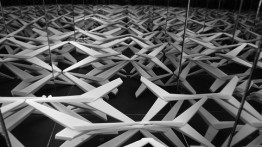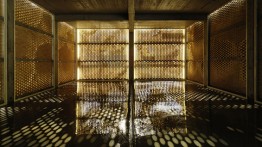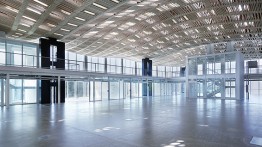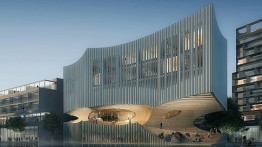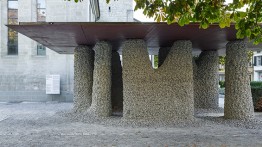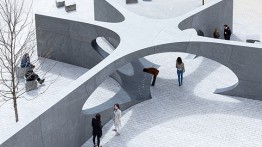The William Cooper Mack Thesis Fellowship Lecture
Tuesday, November 27, 2018, 6:30 - 8:30pm
The William Cooper Mack Thesis Fellowship Lecture: Digital Materiality in Architecture is presented in celebration of the 10th anniversary of the Fellowship. The William Cooper Mack Thesis Fellowship program was established in 2008 by John and Harriet Mack at The Irwin S. Chanin School of Architecture in memory of their son William Cooper Mack, class of 2006.
“The work of Fabio Gramazio and Meejin Yoon both draw on digital and computational intelligence through their research and built body of work,” notes Dean Nader Tehrani. “Gramazio’s work, under the banner of Gramazio Kohler Research at ETH has effectively defined the many ways in which formal, spatial, and material practices have been transformed by digital protocols, using their laboratory as a test bed for novel and unprecedented fabrication explorations, working with both traditional materials and invented composites. Meejin Yoon’s work, in contrast, was launched at MIT under the banner of MY studio, and subsequently in collaboration with Höweler Yoon studios, with a research focused on interactive technologies, imaging all the ways in which physical spaces can be augmented through sensory technologies that make for intelligent and responsive environments. Now after more than a decade of research, the two bodies of work converge as digital technologies come into conversation with other disciplines, among them physics, biology, and other sciences. In a dynamic and active field, as architects who share an intense commitment to practice and research, both also share an imagination about how our pedagogies will be impacted by technologies that stand to alter our understanding of both representational and generative thinking.”
Fabio Gramazio is an architect with multi-disciplinary interests ranging from computational design and robotic fabrication to material innovation. In 2000, he founded the architecture practice Gramazio & Kohler in conjunction with his partner Matthias Kohler, where numerous award-wining designs have been realized. Current projects include the design of the Empa NEST research platform, a future living and working laboratory for sustainable building construction. Having opened the world’s first architectural robotic laboratory at ETH Zurich, Gramazio & Kohler’s research has been formative in the field of digital architecture, setting precedence and de facto creating a new research field merging advanced architectural design and additive fabrication processes through the customized use of industrial robots.
J. Meejin Yoon is an architect, designer, and educator. Yoon is the co-founder of Höweler + Yoon Architecture LLP and MY Studio. Her design work and research investigate intersections between architecture, technology, and public space. Yoon has been widely recognized for her innovative and interdisciplinary teaching and work. She received numerous teaching and design awards including the ACADIA Teaching Award in 2016, the New Generation Design Leadership Award by Architectural Record in 2015, the Irwin Sizer Award for Most Significant Improvement (and Innovation) to Education at MIT in 2013, the United States Artist Award in Architecture and Design in 2008, and the Rome Prize in Design in 2005. Yoon will begin her appointment as Dean of Cornell’s College of Architecture, Art, and Planning in 2019.
The lecture is moderated by Nader Tehrani and Michael Young.
The event is free and open to the public. General public should reserve a space here. Please note seating is on a first come basis; an RSVP does not guarantee admission as we generally overbook to ensure a full house.
This lecture is free and open to the public, and presented in conjunction with the exhibition, Archive and Artifact: The Virtual and the Physical, currently on display in the Arthur A. Houghton Gallery.
View the full Fall 2018 Lectures and Events List.
Located in The Great Hall, in the Foundation Building, 7 East 7th Street, between Third and Fourth Avenues

